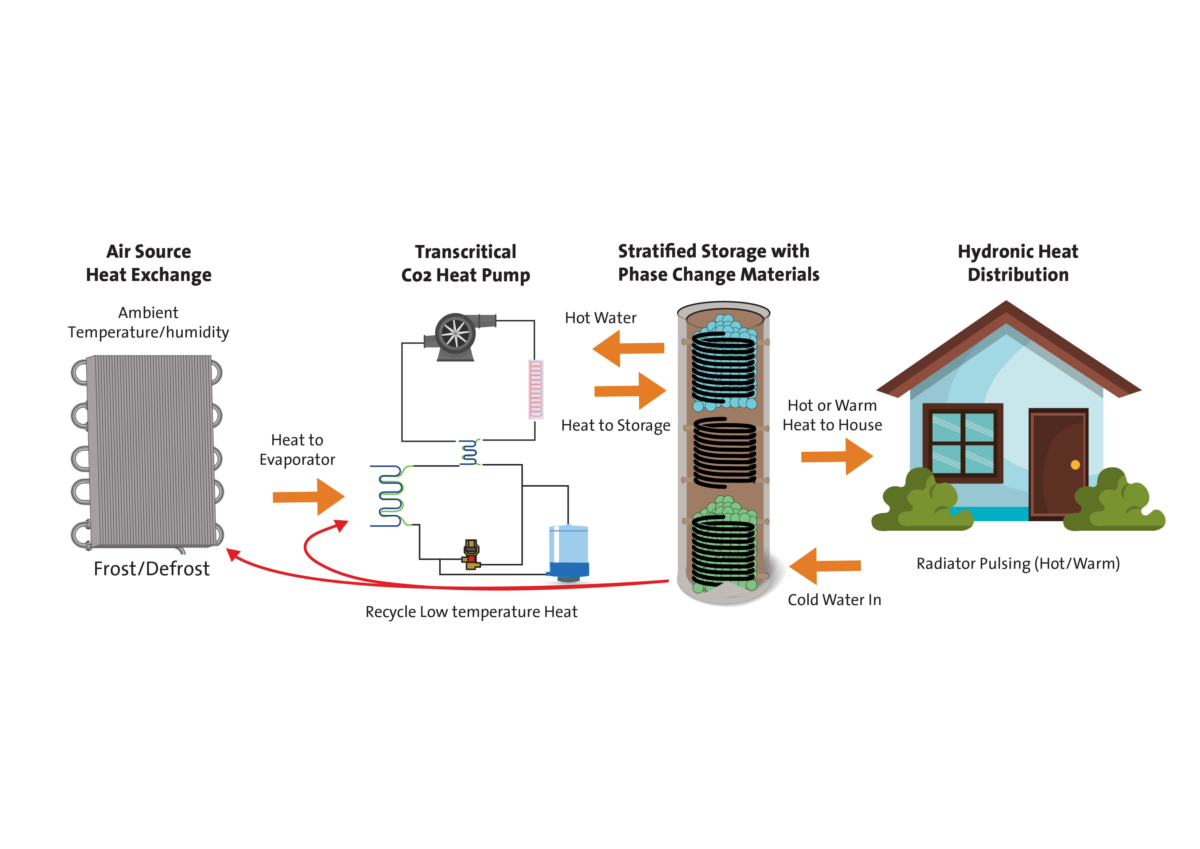Researchers at Brunel University London have developed a new system design for residential heat pumps using transcritical carbon dioxide (CO2) as the refrigerant.
CO2 has a very low boiling point and is considered an ideal refrigerant solution for heat pumps. It is also non-toxic, non-flammable and has a low global warming potential (GWP). “CO2 has a far lower GWP and ozone depletion impact than commonly used synthetic refrigerants and, used in its transcritical cycle, can maintain heat pump performance at lower source temperatures and higher delivery temperatures than most synthetic refrigerants,” the scientists stated.
In the study “Application of transcritical CO2 heat pumps to boiler replacement in low impact refurbishment projects,” published in Heliyon, the research group explained that CO2 heat pumps have been on the market since the beginning of this century and said that a well-known product that is currently on the market is the Eco Cute model for domestic water heating (DWH) introduced by Japanese manufacturer Sanyo in 2001. These devices are commonly able to achieve coefficients of performance (COP) of up to 4 and deliver hot water temperatures up to 60 C.
The scientists said they proposed a transcritical CO2 heat pump design including system modifications that are external to the heat pump cycle and are intended at recovering low temperature heat. Their objective was to create a system with a COP of 3 with the same costs of a gas boiler.
Through a series of simulations, the group designed a 1 kW heat pump system for a UK 91 m2 semi-detached house with hydronic heat distribution and 50 mm external wall insulation added. It consists of a compressor, a gas cooler, an internal heat exchanger, an evaporator, an expansion valve, and receiver.
The heat pump also integrates a subsystem including an air source heat exchanger with frosting and defrosting, and heat storage tanks with phase change materials (PCMs). PCMs can absorb, store, and release large amounts of latent heat over defined temperature ranges. They have often been used at the research level for PV module cooling and the storage of heat.
Popular content
“The heat source side uses a thermal liquid,” the academics explained, noting that the liquid creates an extra heat exchange stage in the heat pump but allows multiple heat sources to be used, while also lowering the pressure and costs of the plumbing. “The heating side models the transfer of heat from moist air through a frost layer, if present, into the heat exchanger. The frost models build and melt the frost layer in line with da Silva et al.‘s mathematical models. They incorporate the impact of the frost layer on heat transfer and on air flow.”
The simulations showed that the heat pump system can achieve a COP of over 3 for a full year run, with maximum values ranging from 3.5 in the winter to 3.7 in the summer. “The results show the annual total heating and DHW requirement being met with COP of between 3.14 and 3.27,” the researchers emphasized. “Winter defrosting was in operation for up to a third of time. The heat pump was never used for more than 25% of time. Recycling was only significant in the summer, reaching 16% of the heat pump operation time.”
Their analysis also showed that, if assisted by photovoltaic panels or thermal collectors, the COP of the system may potentially be raised to 5.1. “With the solar collectors, and current UK Government grants and energy prices, the CO2 heat pump system can achieve a levelized cost of energy (LCOE) of GBP0.20 ($0.22)/kWh, 23% lower than GBP26/kWh for a replacement condensing gas boiler,” they further explained.
This content is protected by copyright and may not be reused. If you want to cooperate with us and would like to reuse some of our content, please contact: editors@pv-magazine.com.



1 comment
By submitting this form you agree to pv magazine using your data for the purposes of publishing your comment.
Your personal data will only be disclosed or otherwise transmitted to third parties for the purposes of spam filtering or if this is necessary for technical maintenance of the website. Any other transfer to third parties will not take place unless this is justified on the basis of applicable data protection regulations or if pv magazine is legally obliged to do so.
You may revoke this consent at any time with effect for the future, in which case your personal data will be deleted immediately. Otherwise, your data will be deleted if pv magazine has processed your request or the purpose of data storage is fulfilled.
Further information on data privacy can be found in our Data Protection Policy.